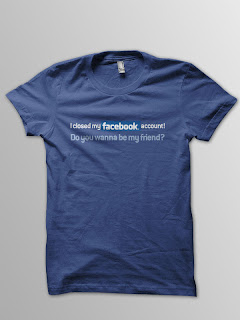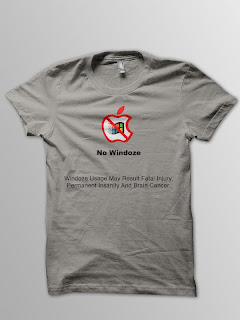More and more, brands are recognizing that a strategic approach to content is becoming important. Content is moving from being among the final considerations of a Web-development project to being front and center in a digital-marketing strategy.
Engage via Conversation
It's easy for brands to get drawn into the hype around the latest format, platform, or tactic. A couple of years ago, brands were all asking for a "viral," whereas now they all seem to be asking for iPhone apps.
But content is merely a means to an end: Content drives conversations, conversations are how you engage with people, and engaging with people is the only way brands will be able to survive in the social-media-disrupted world we now live in.
Formulating a content strategy can be a difficult process, partly because of the many considerations and partly because of the number of stakeholders. So, to help, here's a simple 10-step systematic process for formulating a content strategy.
1. Principles
Set some principles. Doing so allow the brand to have a healthy and robust discussion around authenticity, transparency, and humility, as well as an opportunity to define the engagement policy.
Also, acknowledge that because brands no longer control when the conversations end, you need to commit to making continual investments. Unlike a campaign, this endeavor is ongoing.
2. Business Objectives
Here we get into the "Why are we doing this?" question. Clarify your objectives; link them to appropriate metrics, setting targets if possible; and define a budget.
3. Brand Purpose
Substance focuses the mind on what subjects and topics are important to you. What's your position on things, your point of view? Where's the evidence that you're serious about content? What's your story? What's your purpose? Why should people care?
David Ogilvy, founder of advertising agency Ogilvy and Mather Worldwide, talked about identifying a brand's ideal. For example, Dove believes that the world would be a better place if women were allowed to feel good about themselves, Fanta believes the world would be a better place if we grew up less and played more, Scrabble believes the world would be a better place if we loved words more, and Coca-Cola believes the world would be a better place if we saw the glass as half full, not half empty.
Identifying your brand ideal is a great way to uncover your purpose and so gives you something to anchor your content to. Remember that you need to support your brand ideal with evidence. Just paying lip service is playing with fire.
4. Content Value (Social Currency)
What value does your content deliver directly to people? What value does it deliver indirectly (i.e., the payback you get for telling someone else about it)? The direct value is the content's social currency, and there are five types of value: - Entertainment value. Advertising campaigns typically deal in this currency. It's worth asking whether the idea lends itself to being parodied like Cadbury's Gorilla campaign, as that can be a potent conversation multiplier.
- Personal value. Fame delivers powerful personal value. The rise of The X Factor-type television shows and other reality-TV shows over recent years indicates the value that people place on such content.
- Knowledge value. B2B thought leadership via white papers is an example.
- Monetary value. Consumer public relations (PR) typically deals in this type of currency with promotions and competitions. A 40%-off voucher that UK wine-store-chain Threshers offered in 2006 is a great example.
- Utility value. Many iPhone apps, such as Sky+, fall into this category. Also, see toilet paper brand Charmin'sEnjoy the Go campaign, for which it installed 20 restrooms in Times Square.
How can we blend some of those together to make them more potent? Attempting to blend various values together is the modern-day equivalent of the challenges faced in creating an integrated campaign (i.e., you need a multidisciplined, experienced, and talented team to work collaboratively together).
Here are some other thoughts: Can we tap into popular culture as T-mobile did with TV show So You Think You Can Dance, or can we ride a meme like EA Games did with the Tiger Woods "walking on water" game glitch?
5. Sources
Who is going to be creating or producing all this great content for you? You have more choices than you may realize.
- Employees can be an effective choice. US online shoe retailer Zappos.com encourages all staff to use Twitter and even has a competitive element: a leaderboard that ranks Zappos staff according to their Twitter following.
- Agencies are an obvious route.
- You could use industry peers by simply sign-posting people to relevant, interesting stuff.
- User-generated content (UGC), crowdsourcing, and co-creation can also be a viable option for some brands.
6. Spaces
Which social and digital channels will the content be going out through? Or, put another way, what's the distribution strategy?
- Brand media: outposts, websites, email, or events
- Earned media: influencer networks, communities, or the media (what used to be called the press)
- Paid media
How are you going to balance or integrate content across those spaces? Experiential and social spaces work really well together. For example, if we look at the T-Mobile flash mob in Liverpool Street station, it started with an event (or PR stunt, if you like), word of mouth spread online, and then the traditional media picked up the buzz and covered it via their channels. Another challenging question: Is the brand able to build a social destination? Not many brands can pull that off. If you try and you don't currently have enough pulling power, you could find yourself spending a lot of money on generating traffic, which is pointless. It may be better to get out into the communities that already exist.
7. Formats
Formats that are appropriate to use include blog posts, presentations, videos, pictures, podcasts, tweets, Facebook, iPhone apps, or live streams.
Repurpose your content into different formats. For example, a white paper could be repurposed into a YouTube-video interview with the author, then into a series of blog posts, and then into an iTunes podcast.
Is your content in a format that is easy for people to share and remix? Cadbury's Eyebrows ad actively encouraged parody by providing tools to enable people to remix and share it.
8. Schedule
Remember that conversations can't be turned off like campaigns, so plan for a rolling three-month content schedule. Consider what will be preplanned and what will be left as ad hoc and reactive. How will you ensure a constant stream of content? How are you going to create peaks of interest?
9. Social Agents
Who will be manning your brand outposts? Who will be managing the conversations? Who will be building the relationships? Who will be redirecting questions or suggestions to the appropriate internal function? Who will be looking for early signs of an online crisis?
Ultimately, who will be responsible for your social brand?
Will your social agents be a central team, a distributed team, all employees, an agency?
10. Active Listening
To find out what the reaction to your content has been, you need to ensure you have set up your active-listening tools. What conversations have you started? What conversations do you want to join? How are you tracking against your objectives, targets, and budgets?






















